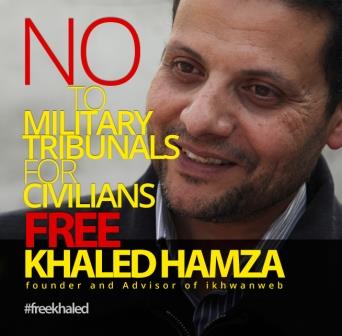|
|||||||||
| :: Issues > Other Blogs | |||||||||

New Media and Persuasion, Mobilization, and Facilitation
There’s a lot of talk about the Internet as a tool to broadcast information. For many groups today, the media is as essential as oxygen, without it they suffocate and fade away. Not only do they need the media to highlight their cause and influence decision makers, but more importantly they need it to build support for their actions and propagate their message. In other words, it is for advertising the cause and intimidating the competition.
|
|||||||||
| Wednesday, August 6,2008 04:53 | |||||||||
|
|||||||||
|
There’s a lot of talk about the Internet as a tool to broadcast information. For many groups today, the media is as essential as oxygen, without it they suffocate and fade away. Not only do they need the media to highlight their cause and influence decision makers, but more importantly they need it to build support for their actions and propagate their message. In other words, it is for advertising the cause and intimidating the competition. How is the “new” different than the “old”? The “old” method of mediated communication, notably newspapers, required significant overhead and was vulnerable to disruptions in getting supplies and distribution of content. In the late-1940s, when newsprint and presses were in short supply in Europe (and access was limited in the East), radio filled a void. Of course listening required both electricity and, of course, radios. But once you had a radio, you could tune-in to “banned” broadcasts without a trace (provided the radio wasn’t overheard), unlike a newspaper which needed to be physically acquired. It could also be broadcast across large geographic territories, ignoring political boundaries. This medium fell short in building active networks of support as listening was passive and you could not know if you were you one of one or one of many.
To the insurgent and terrorist, New Media’s capacity to amplify and increase the velocity of an issue that is critical. They increasingly rely on the Internet’s ability to share multiple kinds of media quickly and persistently to permit retrieval across time zones around the world from computers or cell phones. The value is the ability to not just persuade an audience to support their action, but to mobilize their support and to facilitate their will to act on behalf of the group (or not to act on behalf of another group, such as the counterinsurgent). While the modern electronic environment gives strategic reach beyond what the pamphleteers of the New World had over two hundred years ago, the goal is the same: to persuade, mobilize, and even facilitate action. The reach of the new pamphleteer, if you will, is potentially global and while intended for specific audiences, they do not fear unintended audiences. The purpose is to create support (they prefer active support, but passive is acceptable) that is physical (such as sanctuary), financial (money), moral (backing by religious leaders), social (support of friends and family and fellow travelers), and of course to create a recruiting pool. In 1952, presidential candidate Dwight D. Eisenhower noted civilian leaders look upon public opinion as something to be followed while military leaders know that opinions can be changed. Today, we know civilian leaders do not take such a passive view of public opinion, especially when key legislation or positions are at stake. We also know that insurgents and terrorists know that opinions can be changed. In fact, it is this knowledge that empowers and enables them. In this spirit, below are some images and comments from a presentation of mine on the tactical application of New Media to persuade, mobilize, and facilitate action by insurgents. PERSUASION Below the very strategic “War of Ideas” is the tactical information war to persuade and dissuade. YouTube videos of improvised explosive devices (IEDs) against Coalition forces is well known. On the face, their purpose was violent coercion and a show of David sticking it to Goliath. The insurgents recorded the attacks, branded them with logos and music and uploaded them to YouTube as part of a violent marketing campaign. But the real impact was much more serious and ultimately strategic, but still not a war of ideas. Not generally discussed were the unintended consequences of IEDs. From armored Humvees to Mine Resistant Ambush Protected Vehicles (MRAPs), the strategic value of IEDs to the insurgent was the psychological insecurity they introduced into the Coalition. The reduced trust of the indigenous population had a spiral effect on techniques, training, and procedures. The resulting withdrawal from the “sea of the people” by Coalition forces severely undermined counterinsurgency efforts as the increased distance between the indigenous population and the warfighter “actually assists the enemy in accomplishing his objectives.”
 At the right is another frame from the same Hezbollah video that emphasizes an image of Hezbollah as a nationalist protector of Lebanon. Note the Lebanese flags on the coffins and flying behind the assembled ‘soldiers’ and the lone yellow flag of Hezbollah. These images resonate with their target audience and fit with their state-like activities in support of the population. At the right is another frame from the same Hezbollah video that emphasizes an image of Hezbollah as a nationalist protector of Lebanon. Note the Lebanese flags on the coffins and flying behind the assembled ‘soldiers’ and the lone yellow flag of Hezbollah. These images resonate with their target audience and fit with their state-like activities in support of the population.
The image is of a mass anti-FARC rally early this year. Online communities grant various levels of anonymity to join a cause. Participation can be passive but represent an increased number of “views” to more active, such as membership, adding comments, and replicating content. While IP tracking is possible most don’t think about it and it is still easier to evade, or imaging evasion, than picking up a relatively expensive newspaper. Unlike radio, the online community provides not only persistence but also time-shifting so participants can join and contribute on their schedule. The community continually expands through replicative power of social networking (as well as bloggers).
FACILITATE Online instruction, whether accessed in a computer lab, cafe, or around the world is often better than dry manuals, especially if your “franchise” model doesn’t always require highly trained planners and executors. Sometimes getting caught can keep somebody off balance and show greater local buy-in fence-sitters thought existed.
The immediate access to new and old information is unique in today’s environment. The ability to qualify information before it shapes opinions and creates knowledge has diminished as the trusted media sources, new or old, have a reduced window of opportunity in the time-compressed market to examine and to add context. Likewise, their ability to broadcast clarifications and corrections is virtually nil. The same is true of consumers who frequently take less time to question and cross-check information as they increasingly demonstrate an intellectually lazy, but easy and comfortable, preference for reading, listening, and viewing content that does reinforces their view. The media, new and traditional, gives life and context to virtually all activities. If the terrorist, or insurgent, fails to give context to the event either through an image or other narrative, the amount of influence generated from the act drops considerably, possibly to nothing or even worse (from their point of view). The target could portray the event as something innocuous, like an accident, or much more provocative than intended to create a backlash. Broadcasting the act allows for deeper penetration locally as well as replication to a broader audience. The importance of communicating information in the modern environment is critical. We lament the ability of a guy in a cave to out-communicate the United States, but the group that was a virtual unknown in 1998 faced little opposition in the information war. We lost that fight as much, or possibly more than, Al-Qaeda won it. We have returned to an time in which the value brute force is reduced and the pen, or keyboard and camera-phone, is mightier than the gun. The United States created a term for this “unfair” fight: asymmetric warfare. The only asymmetry was the adversary understood the power of information to persuade, mobilize, and facilitate action. The United States was a pioneer in these areas before détente and the return of secret diplomacy just a few short years after “public diplomacy” was coined diminished the importance of, and even the room for, public rhetoric in international relations. This lowered the level of publicly expressed antagonism and thus the utility of international information activities. Gone was subversion in favor of proxy wars and the anticipation of World War III. The power of, and even the concept of, public opinion faded in international politics in the face of brute force. To beat the adversary, whether he is already “kinetic” or never plans on going kinetic, requires mastering the global information environment to match and counter adversarial messaging. The increasing sophistication of our adversaries to leverage the digital age, as well as the analog age with its culturally attuned rumors and night letters, has changed the objective of war. Instead of destroying the enemy and preserving oneself, it is a contest “in spirit, will, and intelligence on a silent battlefield.” It is focused on destroying the will to launch or wage conflict “by disrupting enemy decision making or paralyzing power systems.” The purpose is to “confuse him mentally” in “attitude warfare” or “perception warfare.” It is now organized processes of persuasion that the United States and her allies must master if we are to mitigate the threat. |
|||||||||
|
Posted in Other Blogs , Reports |
|||||||||
|
|||||||||
|
|
|||||||||
| Related Articles | |||||||||
|
|

 New Media is more than 24/7 news cycles. It is the ability to create trusted peer relationships, or the appearance of, to create legitimacy of information as well as depth and breadth of acceptance. This can be done as traditional media or other new media outlets pick up on a bit of “news” for redistribution, giving the impression of validity as the sources go up from one to many, often in excess of the three needed to create a “fact.” It is easier to see you’re not alone in the New Media environment, something that was not possible with radios and film (unless you risked gathering as a group).
New Media is more than 24/7 news cycles. It is the ability to create trusted peer relationships, or the appearance of, to create legitimacy of information as well as depth and breadth of acceptance. This can be done as traditional media or other new media outlets pick up on a bit of “news” for redistribution, giving the impression of validity as the sources go up from one to many, often in excess of the three needed to create a “fact.” It is easier to see you’re not alone in the New Media environment, something that was not possible with radios and film (unless you risked gathering as a group).



 MOBILIZATION
MOBILIZATION All is not perfect, however. Sometimes the effort to mobilize is questionable. The use of
All is not perfect, however. Sometimes the effort to mobilize is questionable. The use of 
 One last word on the ability of the Internet to facilitate action, sometimes the tools of convenience can be used against us, as the image at the right indicates.
One last word on the ability of the Internet to facilitate action, sometimes the tools of convenience can be used against us, as the image at the right indicates. 





